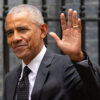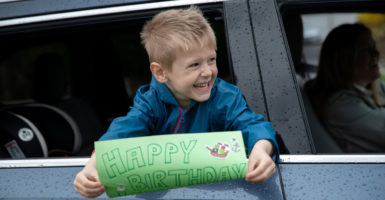As a physician, I have observed the nature of many epidemics since the early 1960s, when I entered medical school. As a child, I witnessed my parents’ fear of dreadful diseases such as polio and scarlet fever.
The sheer horror of those diseases—especially the polio virus, which condemned children to an immobile life and death in iron lungs—is seared into my memory.
Our medical school campus at the University of Texas at Galveston had a tuberculosis hospital. As a student, I spent a month at that hospital practicing strict isolation procedures while learning about TB.
Those hospital officials were proud of the fact that no person working in that facility, from those who kept the hospital clean to the medical director, ever had contracted tuberculosis in the course of their duties.
In the 1980s, I began my tenure as an officer of the American Medical Association during the outbreak of the HIV/AIDS epidemic. We again were dealing with a new and deadly virus.
In the early stages of the disease of AIDS, before medical science was able to deploy effective drug therapies, it was almost invariably fatal. Naturally, the AIDS epidemic provoked fear and prejudice, and we had to sort out the parameters of the infection in that environment.
I recall a demonstrator declaring that the only vaccine against the epidemic was education. Our American Medical Association was a steadfast advocate of leveraging science and education to find a way forward and to arrest that terrible disease.
History is our best teacher. David McCullough, a great popular historian, wrote an excellent account of the construction of the Panama Canal, “The Path Between the Seas.” The workforce on that gigantic project was struck by yellow fever and malaria.
McCullough recounts the story of how Dr. William C. Gorgas handled both epidemics, and how his great work as an Army physician enabled this historic project to proceed without the horrendous toll of disease and death that existed before his intervention.
As with previous epidemics, America’s pathway to success in battling the new coronavirus is education. Our investigative capabilities have become so sophisticated that a large amount of knowledge has been gained about the virus in a short period of time. As in the past, our management of the threat became driven by data and was applied with knowledge of previous experience.
It didn’t take long to figure out that certain segments of our population, older Americans and others with underlying medical conditions, are particularly vulnerable to this dangerous disease. Some segments seem to be spared from clinically apparent disease, and the great majority of those who contract the disease have a relatively mild form.
As an octogenarian, a member of one of the groups at high risk, I have a big target on my own back.
It has been gratifying to see how those at little or no risk have been so quick to cooperate with measures designed to protect the elderly and otherwise vulnerable part of our population.
As a physician, it has been even more gratifying to see how the American people have been willing to sacrifice to keep our health care system from being overwhelmed.
With the interruption of trade, travel, and commerce between China and the rest of the world, it was inevitable that severe economic damage was forthcoming. With the severe and growing threat of contagion, we realized that slowing the spread was essential to protect our health system, and that meant shutting down a great deal of our social activity.
We are on the verge of another major public policy debate. It is going to be a debate over how to strike the right balance: how to balance the need to protect both the vulnerable population and the capacity of our health care institutions to care for the sick with the pressing need to restore our usual daily social lives and our livelihoods. Striking the right balance is the task of true statesmen; it requires sound practical judgment and common sense.
We are all in this together, like it or not. As I approach my 82nd birthday, I humbly offer some advice.
We old folks, and those of us who have other vulnerabilities, should continue our self-isolation for as long as we—meaning our leaders and their public health experts—think necessary and desirable.
Just as many young people have been willing to sacrifice for us by isolating themselves, I am confident that, in return for being able to go back to school or to work, they would be willing to continue to bring food to our doorsteps. I believe they also would be willing to help in other ways if we face prolonged isolation.
Unlike previous generations, we also are blessed with modern technology. While isolation is ubiquitous, our young innovators have figured out that we can have virtual cocktail parties on Zoom. We can FaceTime with our family members. We can still go out for a walk safely, if we do so when all the kids are back in school and their parents are back at work.
Think about it. Is it so bad for the elderly and otherwise vulnerable to keep to ourselves for a little longer while we let the less vulnerable return to life as we want it? Isn’t the magic word here “balance”?
Take it from an old doctor. A balanced, nuanced approach to battling this COVID-19 pandemic is a reasonable path forward. And a big tip of the hat to all of those who have been willing to sacrifice to protect those of us at increased risk.
Bless them all.



























